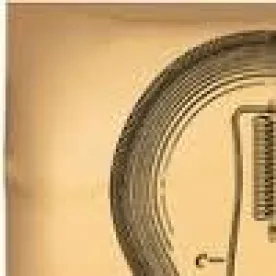September 16, 2011, President Obama signed into law the Leahy-Smith America Invents Act (“AIA”), H.R. 1249, which was passed by the U.S. House of Representatives on June 23, 2011. President Obama had previously indicated he was in favor of the AIA.
The AIA makes significant and far-reaching changes to U.S. patent law, including:
-
Changing the U.S. patent system from its current “first to invent” system into a “first to file” system, consistent with patent laws throughout most of the world; the U.S. “first to file” system will have a one-year “grace period” as to certain disclosures from inventors abiding by the prior system.
-
Eliminating the geographic and English-language distinctions among types of prior art in the current patent statute, and resetting the bar to patentability as whether the claimed invention was patented, was described in a printed publication or was otherwise disclosed to the public before the effective filing date of the claimed invention or was described in a patent with a prior filing date or a published patent application that names another inventor.
-
Eliminating confidential sales from being a bar to patentability—a revamping of the current “on sale bar” to patentability under which any offer for sale of an invention ready to be patented starts the clock on the one-year grace period within which a patent application on the invention must be filed.
-
Eliminating Interference Proceedings but creating Derivation Proceedings calling for a Petition under oath setting forth with particularity, and supported by substantial evidence, bases for finding that a named inventor in an earlier application derived the invention from the inventor named in the Petitioner’s application, and without authorization filed the earlier application, and that the inventions in the applications are the same or substantially the same.
-
Removing failure to disclose Best Mode as grounds for canceling a patent or holding a patent invalid or unenforceable—even though 35 U.S.C. § 112 will still call for patent applications to contain the Best Mode contemplated by the inventor or joint inventor.
-
Enabling a person to whom the inventor has assigned or is under an obligation to assign the invention to apply for a patent, and enabling a person who otherwise shows sufficient proprietary interest to apply for a patent on behalf of and as agent for the inventor. This is a simplification of the current patent application oath or declaration practice.
-
Requiring that each inventor execute an oath or declaration that the patent application was made or was authorized to be made by him or her, and that he or she believes himself or herself to be the original inventor or an original joint inventor; but, authorizing such statements to be withdrawn, replaced or otherwise corrected at any time, and confirming that no patent shall be invalid or unenforceable based on failure to comply with the requirement for a proper oath or declaration, if remedied. This streamlines current correction of inventorship practice.
-
Post-Grant Inter Partes Review within nine (9) months of grant in which failure to meet any of the conditions for patentability may be raised, so long as the information presented, if not rebutted, demonstrates that it is more likely than not that at least one of the claims challenged is unpatentable, such proceedings to include depositions, other discovery as necessary in the interests of justice, a set time for conclusion and the ability to terminate the proceeding via settlement. These will essentially be opposition proceedings as in other countries.
-
Post-Grant Inter Partes Review after nine (9) months of grant or after conclusion of the opposition-like Post-Grant Inter Partes Review, based only on patents and printed publications, and with the higher threshold that the Petitioner must show a reasonable likelihood that the Petitioner would prevail with respect to at least one of the claims challenged, with depositions, other discovery as necessary in the interest of justice, a set time for conclusion and the ability to terminate the proceeding via settlement. This represents a revamping of the current Inter Partes Reexamination.
-
Altering the false patent marking statute, which partially dates back to the 19th century, to eliminate the standing of the vast majority of plaintiffs. This change will apply retroactively and will vastly diminish the number of false patent marking cases clogging U.S. courts.
Some of the changes brought by the AIA are set to take effect as early as within one year of its enactment. Accordingly, the U.S. Patent & Trademark Office has already established a website to provide information on the legislation and to seek input and comments.


 />i
/>i

